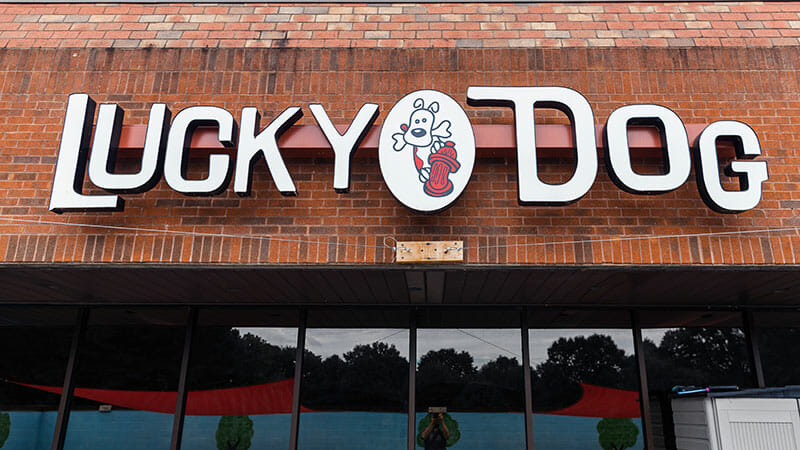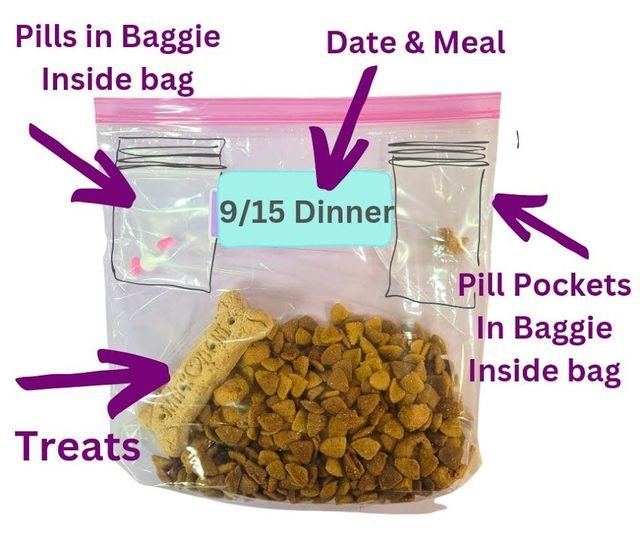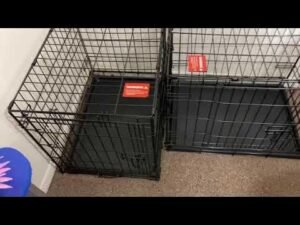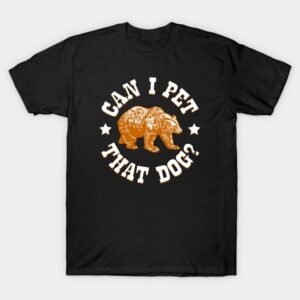To pack dog food for boarding, use an airtight container to keep it fresh. Clearly label the container with your dog’s name and feeding instructions. How to Pack Dog Food for Boarding –
Preparing for your dog’s boarding stay can be stressful. Ensuring your pet has their familiar food will help them feel at ease. Packing dog food properly is essential for maintaining its freshness and quality. Choose a durable, airtight container to protect the food from moisture and pests.
It’s also wise to include a bit of extra food in case of delays or extended stays. Label the container with your dog’s name, feeding schedule, and any special dietary needs. This will help the boarding staff provide the best care for your furry friend while you are away.
Table of Contents
Introduction To Packing Dog Food For Boarding
Packing dog food for boarding is essential for your pet’s well-being. Many pet owners face challenges when preparing food for their dogs. Proper packing ensures your dog maintains a healthy diet during their stay away from home. This guide covers important aspects of packing dog food for boarding.
Why It’s Important
Packing the right amount of dog food is crucial. Here are some key reasons:
- Consistency: Your dog needs regular meals.
- Health: A sudden diet change can upset their stomach.
- Comfort: Familiar food provides comfort in a new environment.
- Allergies: Avoid potential allergic reactions by sticking to their usual food.
Key Considerations
Consider these factors when packing dog food:
- Quantity: Pack enough food for the entire stay.
- Packaging: Use airtight containers or resealable bags.
- Labeling: Clearly label the food with your dog’s name.
- Instructions: Include feeding instructions for the caregivers.
- Extras: Pack any supplements or treats your dog needs.
Follow these tips to ensure a smooth boarding experience for your furry friend.

Credit: luckydogbarkandbrew.com
Choosing The Right Dog Food For Boarding
Choosing the right dog food for boarding is essential. Your dog’s health and happiness depend on it. Consider their specific needs and preferences. This ensures they stay comfortable and nourished.
Assessing Your Dog’s Dietary Needs
Start by understanding your dog’s dietary requirements. Here are some key factors:
- Age: Puppies, adults, and seniors have different needs.
- Size: Small breeds may require different formulas than large breeds.
- Health issues: Look for special diets for allergies or sensitivities.
- Activity level: Active dogs may need more calories.
Consult your veterinarian for recommendations. They can provide tailored advice. Make a note of your dog’s current food brand. This helps to maintain consistency.
Selecting For Convenience And Nutrition
Choose a dog food that balances convenience and nutrition. Consider these options:
| Type of Dog Food | Convenience | Nutrition |
|---|---|---|
| Dry Kibble | Easy to store and measure | Balanced nutrition |
| Canned Food | Ready to serve | High moisture content |
| Freeze-Dried Food | Lightweight and portable | Retains nutrients |
| Homemade Meals | Customizable | Fresh ingredients |
Pick a food that your dog enjoys. This encourages them to eat while boarding. Pack enough food for the entire stay. Include extra in case of delays.
Pre-measured Portions: A Game Changer
Packing dog food for boarding can be stressful. Pre-measured portions simplify this task. They ensure your dog gets the right amount of food every time. This method saves time and reduces mess.
Benefits Of Pre-measuring
- Convenience: No need to measure during boarding.
- Consistency: Each meal has the same amount of food.
- Diet Control: Helps maintain your dog’s diet.
- Less Waste: Reduces the chances of overpacking.
- Time-Saving: Speeds up feeding time.
How To Pre-measure Accurately
Follow these simple steps to pre-measure dog food accurately:
- Get the right tools. Use a measuring cup or scale.
- Check the feeding guidelines on the dog food package.
- Decide on the number of meals for your dog’s stay.
- Measure the food for each meal carefully.
- Place portions in labeled bags or containers.
Here’s a simple table for meal portioning:
| Dog Weight | Food Amount per Meal | Meals per Day |
|---|---|---|
| Up to 10 lbs | 1/2 cup | 2 |
| 11-20 lbs | 1 cup | 2 |
| 21-50 lbs | 1.5 cups | 2 |
| 51-100 lbs | 2.5 cups | 2 |
By using pre-measured portions, you ensure a smooth boarding experience. Your dog remains happy and healthy.
The Best Containers For Dog Food Storage
Choosing the right container for dog food is crucial. Proper storage keeps food fresh and safe. It also makes feeding time easier and cleaner. Let’s explore the best options for storing your dog’s food.
Types Of Containers
- Plastic containers
- Metal containers
- Glass containers
- Fabric storage bags
Pros And Cons Of Each Type
| Container Type | Pros | Cons |
|---|---|---|
| Plastic containers |
|
|
| Metal containers |
|
|
| Glass containers |
|
|
| Fabric storage bags |
|
|
Labeling Tips For Dog Food Containers
Proper labeling of dog food containers ensures clear communication. It helps caretakers know what to feed your dog. This section covers essential information and creative labeling ideas.
What Information To Include
Include key details on your dog food container. This helps anyone handling your pet’s food. Here’s a quick list:
- Dog’s Name: Clearly write your dog’s name.
- Feeding Instructions: State how much to feed.
- Food Type: Specify the brand and flavor.
- Allergies: Note any known allergies.
- Owner’s Contact: Provide your phone number.
Consider using a permanent marker for clear writing. Use labels that stick well to the container. This ensures the information stays visible.
Creative Labeling Ideas
Make your labels stand out. Use bright colors and fun designs. Here are some creative ideas:
- Use dog-themed stickers or stamps.
- Incorporate fun fonts for your dog’s name.
- Color code different types of food.
- Add a photo of your dog for a personal touch.
These ideas help your dog’s food catch attention. They also make it easier for others to identify. Get creative while keeping the information clear.
Packing Extras: Beyond Basic Nutrition
When preparing for your dog’s boarding, consider packing extras. Beyond just food, these items enhance your dog’s comfort and health. Quality care includes not only meals but also supplements, treats, and personal items.
Supplements And Vitamins
Supplements and vitamins support your dog’s overall health. They can boost energy, improve coat quality, and enhance digestion. Here are some common supplements:
| Supplement | Benefit |
|---|---|
| Fish Oil | Supports skin and coat health. |
| Probiotics | Enhances digestion and gut health. |
| Joint Supplements | Supports joint health and mobility. |
| Multivitamins | Provides essential nutrients. |
Consult your vet for specific needs. Include the right dosage in your packing list.
Special Treats For Comfort
Special treats offer comfort during boarding. Familiar flavors help ease anxiety. Choose treats your dog loves. Pack a variety for excitement:
- Soft chews for quick rewards
- Dental sticks for oral health
- Freeze-dried meat snacks for protein
- Homemade treats for a personal touch
Ensure treats are safe and healthy. Avoid any allergens your dog may have. A little extra love goes a long way in keeping your dog happy.
Preparing For Special Dietary Needs
Taking care of your dog’s special dietary needs is essential. Many dogs have specific allergies or medical diets. Preparing properly ensures your dog stays healthy while boarding. Follow these tips to help your furry friend.
Handling Allergies And Sensitivities
Allergies can be serious for dogs. Always check food labels for allergens. Here are steps to manage allergies:
- Identify allergens: Know what your dog cannot eat.
- Choose safe food: Select food without harmful ingredients.
- Communicate: Inform the boarding staff about allergies.
- Label everything: Clearly mark all food containers.
Consider packing allergy medications. Keep them in a separate bag. This helps staff access them quickly.
Packing For Medical Diets
Some dogs require medical diets. These diets support health conditions. Follow these tips for packing:
- Consult your vet: Get a recommended diet plan.
- Measure portions: Pack daily servings for easy feeding.
- Include instructions: Write feeding guidelines for the staff.
- Check expiration dates: Ensure food is fresh before packing.
Use airtight containers to keep food fresh. Label each container with your dog’s name. This prevents mix-ups during boarding.
| Diet Type | Example Foods | Special Instructions |
|---|---|---|
| Grain-Free | Sweet potatoes, peas, chicken | No grains or fillers allowed |
| Prescription Diet | Royal Canin, Hill’s Science Diet | Follow vet’s feeding schedule |
| Low-Protein | Specialized kibble | Monitor protein intake closely |
Proper preparation ensures your dog enjoys their stay. Keeping their diet consistent helps avoid health issues.
Final Checklist Before Boarding
Preparing for your dog’s boarding stay is essential. A final checklist ensures you pack everything your furry friend needs. Here’s what to review before you leave.
Reviewing Your Packing List
Start by going through your packing list. Include all items your dog needs for a comfortable stay. Here’s a simple checklist:
- Dog Food: Enough for the entire stay.
- Food Container: To keep food fresh.
- Water Bowl: A non-spill option is best.
- Treats: For rewards and comfort.
- Leash and Collar: Ensure they fit properly.
- Medications: Any necessary prescriptions.
- Comfort Item: A favorite toy or blanket.
Last-minute Considerations
Before you leave, check a few last details. Make sure everything is in order.
- Confirm the boarding facility’s requirements.
- Label all food containers with your dog’s name.
- Double-check medication instructions.
- Pack any special dietary items.
- Prepare emergency contact information.
With this checklist, your dog will have everything for a smooth boarding experience. Enjoy peace of mind knowing you packed the essentials!
Frequently Asked Questions
How Should I Pack Dog Food For Boarding?
When packing dog food for boarding, use a sturdy, airtight container. Ensure the container is clearly labeled with your dog’s name and feeding instructions. Portion the food into daily servings to make it easier for staff. This helps maintain your dog’s routine and prevents overfeeding.
Can I Bring Homemade Dog Food For Boarding?
Yes, you can bring homemade dog food for boarding. However, it’s essential to provide clear instructions and ingredient lists. Pack the food in a secure container to prevent spills. Always check with the boarding facility beforehand to ensure they can accommodate homemade meals.
How Much Dog Food Should I Pack For Boarding?
Pack enough dog food for the entire duration of your pet’s stay. A good rule is to include an extra day’s worth in case of delays. Calculate the daily serving size based on your dog’s feeding routine. Always label the container with your dog’s name and feeding guidelines.
Is It Necessary To Bring Dog Treats For Boarding?
While not mandatory, bringing dog treats can be a great comfort for your pet. Treats can help ease anxiety and reward good behavior during boarding. Ensure you pack treats that your dog enjoys and are suitable for their dietary needs.
Always communicate any dietary restrictions to the staff.
Conclusion
Packing dog food for boarding is essential for your pet’s comfort and health. Use clear, labeled containers to avoid confusion. Portion meals to maintain their routine and minimize waste. Following these tips ensures your dog stays happy and well-fed while you’re away.
A little preparation goes a long way for peace of mind.



